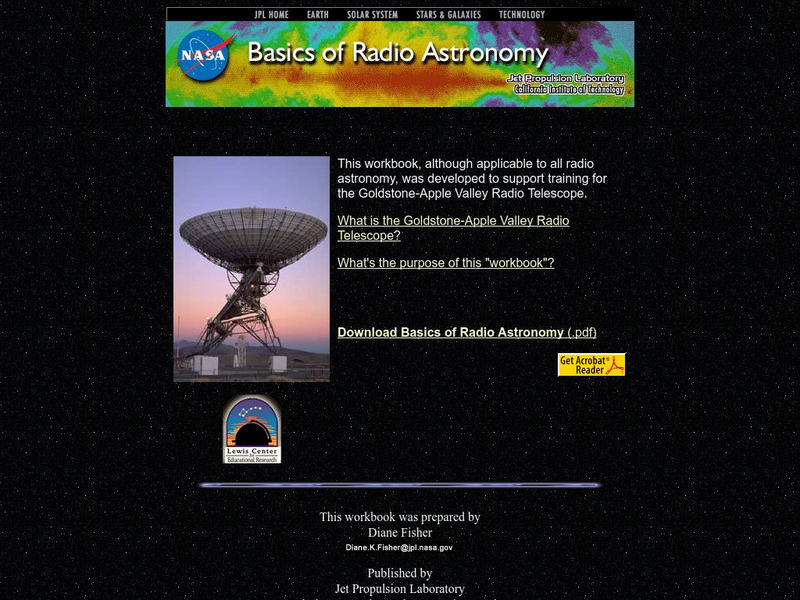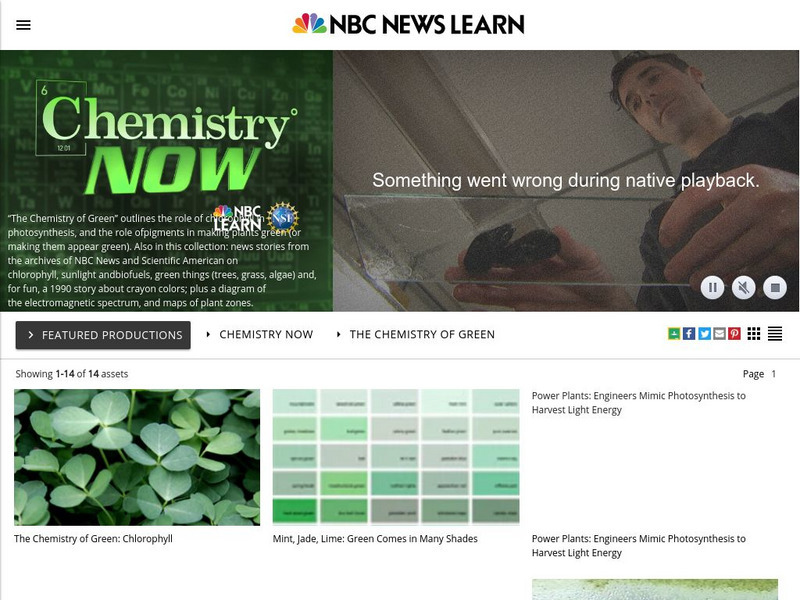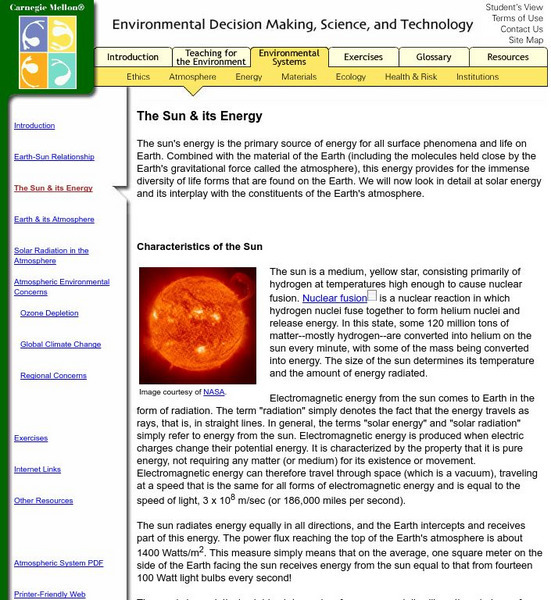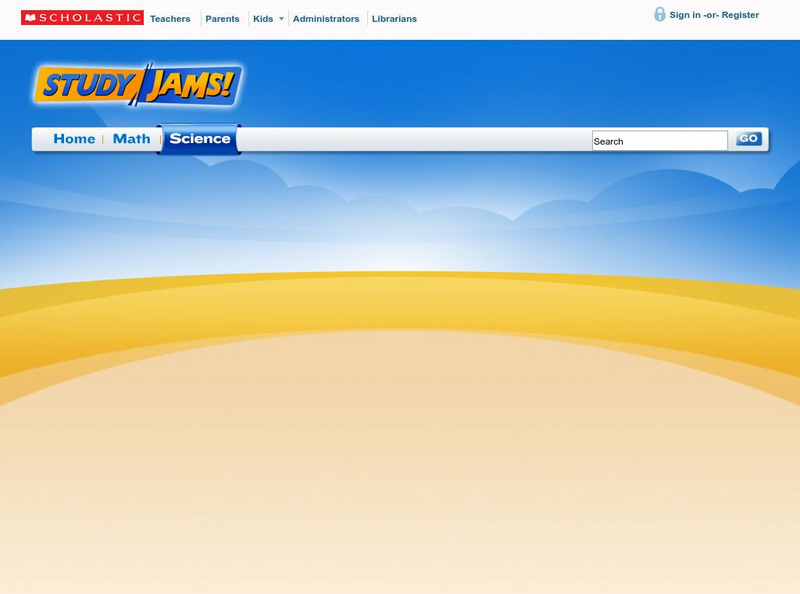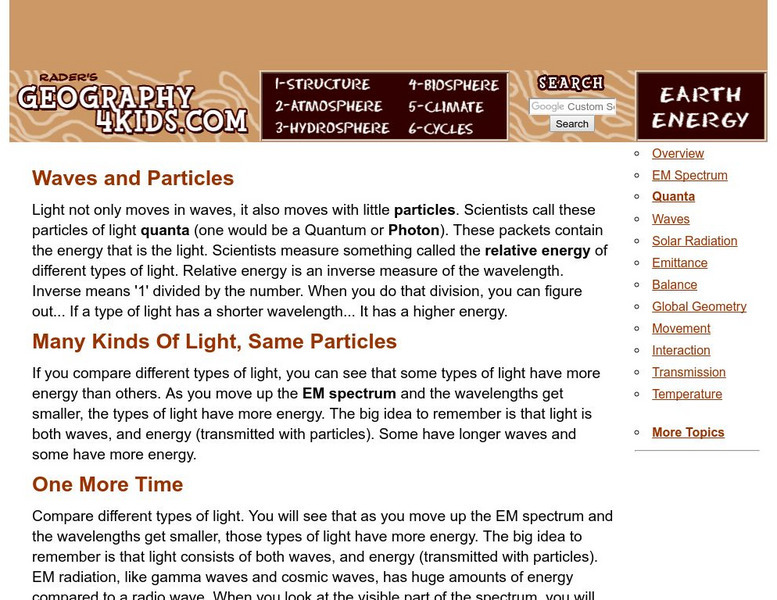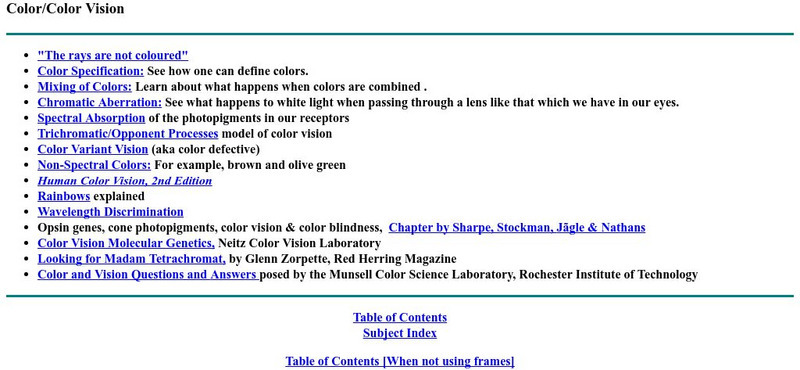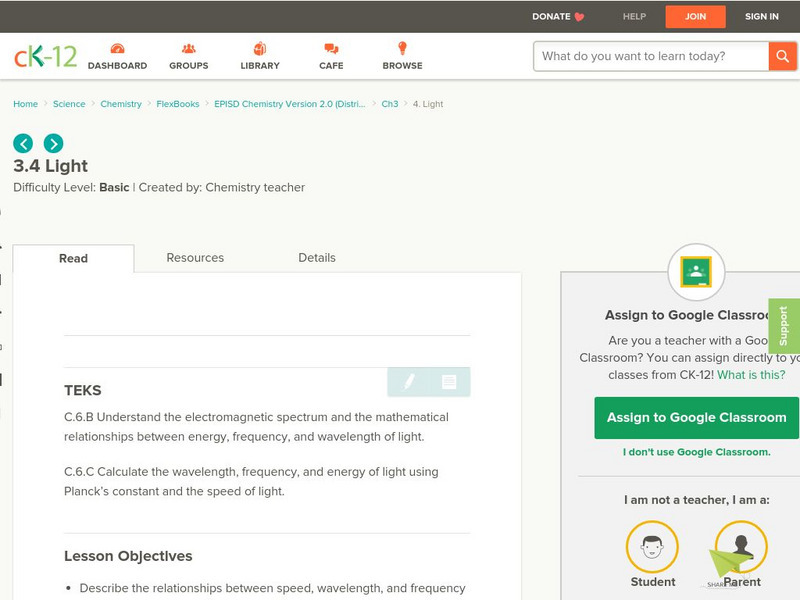Alabama Learning Exchange
Alex: Understanding Solar Energy. Part 1
This lesson discusses how electromagnetic radiation transfer the sun's energy to earth. This lesson will also talk about the eight types of electromagnetic waves in the electromagnetic spectrum and how each type is used or found in our...
NASA
Nasa: Basics of Radio Astronomy
Site developed by NASA to support training at the Goldstone-Apple Valley Radio Telescope. A manual in PDF format that covers everything from the basics of electromagnetic spectrum through radio sources through mapping the sky in the...
University of California
U.c. Berkeley: Spectra From Space
View the entire spectrum of electromagnetic radiation and get information on telescopes especially designed to view different wavelengths of the spectrum.
Georgia State University
Georgia State University: Hyper Physics: Photoelectric Effect
Using graphics, words and numbers, the photoelectric effect is described and explained. Planck's theory about quanta of light is explained. Photon energies for the various regions of the EM spectrum are listed. An interactive JavaScript...
CK-12 Foundation
Ck 12: Chemistry Simulation: Neon Lights
[Free Registration/Login Required] Neon lights are a type of discharge tube. Observe how electrons create colored light in a hydrogen gas discharge tube. Can you figure out why hydrogen's emission spectrum contains more than one color of...
NBC
Nbc Learn: Chemistry of Green: Chlorophyll
In this video/lesson series you will learn the role of chlorophyll in photosynthesis, and the role of pigments in making plants green (or making them appear green). Also in this collection: news stories from the archives of NBC News and...
TeachEngineering
Teach Engineering: Waves Go Public!
Students apply everything they have learned over the course of the associated lessons about waves, light properties, the electromagnetic spectrum, and the structure of the eye, by designing devices that can aid color blind people in...
University of Colorado
University of Colorado: Physics 2000: Einstein's Legacy: Microwave Ovens
A series of pages that explain how microwave radiation is utilized by ovens to cook food. Includes several Java applets.
Carnegie Mellon University
Telstar: The Sun and Its Energy
The sun's energy is the primary source of energy for all surface phenomena and life on Earth. Combined with the material of the Earth (including the molecules held close by the Earth's gravitational force called the atmosphere), this...
Carnegie Mellon University
The Sun and Its Energy
The sun's energy is the primary source of energy for all surface phenomena and life on Earth. Combined with the material of the Earth (including the molecules held close by the Earth's gravitational force called the atmosphere), this...
Scholastic
Scholastic: Study Jams! Science: Energy, Light and Sound: Light
A video and a short quiz on the basic concepts and vocabulary for understanding light energy.
TeachEngineering
Teach Engineering: The Visual Spectrum
In this activity, students make simple spectroscopes (prisms) to look at different light sources. The spectroscopes allow students to see differing spectral distributions of different light sources.
Sophia Learning
Sophia: Radiation and Energy: Lesson 2
This lesson discusses the light spectrum and its influence on living things. It is 2 of 3 in the series titled "Radiation and Energy."
Science Education Resource Center at Carleton College
Serc: How Can We Measure the Wavelength of Light Emitted From Stars?
This activity is designed for students to apply their knowledge of mathematics and physics to "real life" situations. Students are presented with the situation that they are on a camping trip and wish to know the wavelength emitted by a...
Geography 4 kids
Geography4 kids.com: Waves and Particles
Understand how light moves in small particles in the electomagntic spectrum.
California Institute of Technology
Nasa: Infrared Astronomy
A complete, multi-page tutorial on infrared radiation and its importance to astronomical studies.
York University
York University: Color and Color Vision
York University provides an index page to several other pages on the topic of color and color vision. The pages are part of an online "book." Many graphics and explanations.
Trinity College Dublin
The History of Mathematics: Young
A short sketch of the life and work of Thomas Young (1773-1829 CE). Traces early upbringing and education and his scientific discoveries and contributions.
NumberNut
Number Nut: Light and Colors
Discover the relationship between light and colors in this brief lesson. Links to related color identification activities, Color Memory Challenge and Identifying Colors Quiz. Immediate feedback given to responses that includes...
Discovery Education
Discovery Education: Physical Science
The Discovery Channel provides numerous lesson plans dealing with the physical sciences. Content is organized by grade level, but all lesson plans include suggestions for adaptations for older or younger audiences.
PBS
Pbs Learning Media: Gamma Ray Burst Theories
This video segment from Swift: Eyes through Time introduces and explains theories of the origin of gamma-ray bursts. [4:11]
Physics Classroom
The Physics Classroom: Light Waves and Color
The behavior of light waves is introduced and discussed. Also, polarization, color, diffraction, and interference are introduced and discussed thoroughly as supporting evidence of the wave nature of light.
CK-12 Foundation
Ck 12: Light
[Free Registration/Login may be required to access all resource tools.] In the following tutorial students will describe the relationships between speed, wavelength, and frequency of light. They will understand the photoelectric effect...
University Corporation for Atmospheric Research
Ucar: Virtual Ballooning to Explore the Atmosphere Activity
In this computer-based virtual lab, students will learn about the layers of Earth's atmosphere by launching virtual balloons to collect temperature and pressure data at various altitudes. Given a limited number of balloon flights,...

